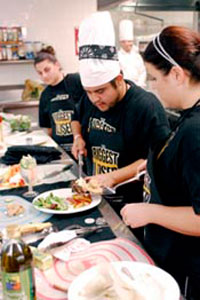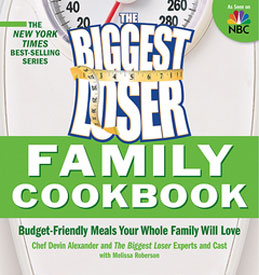It’s almost time for another season of The Biggest Loser. One of the things I think makes this show unique is that more people watch it for inspiration rather than entertainment. As a nutrition and fitness expert who tunes in religiously, I get tons of questions about my impressions of the show. My favorite is the epiphanies and “a-ha” moments people experience on camera. You can tell they’ve reached the point of no return. The new behaviors they pick up on the show help them add years to their life and life to their years. Could there be a better “prize” than that?
What’s so special about “the ranch” that allows the transformations to occur? In a word, environment. One of the reasons the people lose so much weight consistently is because of their new environment. All the barriers that usually exist to behavior change (job, life stresses, family and friends, lack of time, lack of knowledge about what to do) have been removed. Their new job is to exercise, learn about good nutrition habits, and practice them. This is one of the keys to their success. They get enough time in the new environment that once they leave they have enough knowledge and motivation to keep it going… Essentially, they transform their lifestyle.
That said, “Biggest Loser” success is within everyone’s reach. In this first post of a series, I’m going to review the nutrition changes that happen on the ranch and give you tips for how you can make similar changes at home and lose weight with the contestants.
Here’s the nutrition criteria contestants follow on the show, which is created and monitored by a registered dietitian.
- modified low carbohydrate diet: 45% of calories from carbohydrates (mostly fruits, vegetables and some whole grains), 30% of calories from protein, and 25% of calories from healthy fats or oils (seeds, nuts, avocado, olive oil)
- no “white stuff”
- whole foods, elemental ingredients
- 4-3-2-1: daily 4 cups minimum of fruits and vegetables, 3 servings of healthy proteins (e.g. fish, skinless chicken breast, 93% lean ground turkey), 2 servings of whole grains, and 1 serving of healthy fat.
- Aim for everyone to have 1 serving of fish daily.
- There is room for 1 optional treat per day.
- Cereals must have minimum 5 grams of fiber per serving and less than 5 grams of sugar per serving. This limits the cereals to certain oatmeals, bran cereals, or other high fiber cereals on the market.
- Goal of 7 calories per pound of body weight for daily caloric intake. This is recalculated after significant weight loss. (So a 250 pound person could consume 1750 calories per day.)
Participants are provided with calorie counting resources and a food and exercise diary which they must maintain daily. This helps to raise awareness of past behaviors and develops an understanding for calorie balance through diet and exercise.
- Make over your pantry. Take stock of how much processed snack foods you have and say “goodbye.” Most of the foods in your pantry should be healthy, shelf-stable foods. Canned beans, tomatoes, oatmeal, almonds, whole grain pasta, etc. should replace chips, cookies, and high sugar cereals (even the “diet” versions).
- Plan out your meals and snacks. Decide what you would like to eat for your meals and snacks that follow the “Biggest Loser” 4-3-2-1 plan. Daily 4 cups minimum of fruits and vegetables, 3 servings of healthy proteins (e.g. fish, skinless chicken breast, 93% lean ground turkey), 2 servings of whole grains, and 1 serving of healthy fat.
- Make a new grocery list. Based on your meal plan, make a list of what you will buy at the grocery store – and stick to it. Don’t get deterred by impulse buys or sales on sweets, treats, and snack foods.
- Journal your food intake for two weeks. Food journaling is an effective tool for weight management. It helps you stay honest and accountable. Most importantly, you will learn so much about your food choices and how mindfully eating can help you lose weight.

